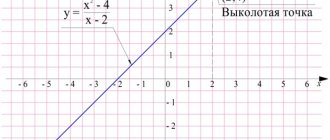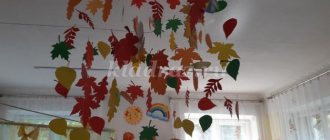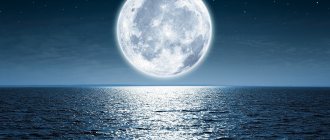Summer months
As you know, each of the four seasons consists of three months. The summer months are the brightest, warmest, and most cheerful. Let's observe how the world around us changes with the arrival of summer, and what are the features of all three summer months.
- June
The very first month of summer. The beginning of the warm season makes itself felt by the longer daylight hours. The sun rises above the earth very early and shines brightly throughout the day, starting to get hot towards noon.
In June, the first summer berries and fruits begin to ripen in the garden beds: strawberries, currants, cherries. Fields and meadows are covered with a beautiful colorful carpet of herbs.
- July
If the weather in June is mild, then with the arrival of the second summer month - July - it begins to change noticeably. During this period, the sun becomes very active, and already in the morning it becomes very hot outside. At noon, the sun can be so hot that if you find yourself walking without a hat and water, you can easily get heatstroke or sunstroke.
Rice. 1. Hot July sun.
Nature also suffers from extreme heat: thin streams and shallow reservoirs dry up, grass dries out, and spontaneous fires can occur in the steppe zone.
TOP 4 articles that are read along with this
- 1. Seasons
- 2. When summer comes
- 3. You and your friends
- 4. Clothes
Among other things, the weather can surprise you with a sharp change in its “mood.” The bright sun will suddenly disappear behind the clouds, thunder will burst from the sky and heavy rain will fall on the ground. But after half an hour the storm ends safely, and the sky becomes as clean and clear as before.
- August
Following the sultry July, the time comes for the last summer month - August. With its arrival, changes begin to be felt in nature: the sun stops scorching the earth, daylight hours become shorter, and in the evenings a pleasant coolness descends on the earth.
It’s not for nothing that August is called the velvet season. The weather in this summer month is very comfortable: not too hot, but not too cold, the air is warm, soft, not too dry. In addition, rich fruit harvests are harvested in August: amber grapes, juicy peaches, honeyed pears, and plums ripen.
Rice. 2. Generous harvest in August.
Lesson summary on the topic: “Summer has come. Summer months"
Lesson objectives:
Remember and repeat the signs of the summer season;
teach children to identify the main features of each summer month; develop memory, thinking, the ability to correctly and competently express one’s thoughts; instill a love of poetry, art and music. Planned results: learn the main signs of summer. Equipment: music by Vivaldi, photo images of summer nature. Preliminary work: prepare music by A. Vivaldi “Summer”, 3 illustrations depicting summer landscapes.
Lesson plan:
I. Org. moment. II. Review of the previous topic, checking homework. III. Communicate the topic and objectives of the lesson. IV. New material. V. Physical education minute. VI. Reinforcement of material covered in class. VII. Summarizing. VIII. Homework assignment.
* In the image there is a painting by I. Levitan “Birch Grove”
During the classes
I. Organizational moment. Say hello to the children and check their readiness for the lesson. Concentrate children's attention with the game “Look at your desk neighbor.”
II. Repetition of previously learned. Consolidate the knowledge gained in the last lesson, check your homework by asking a few questions. Evaluate the best students.
III. Communicate the topic and objectives of the lesson. To the musical accompaniment of A. Vivaldi’s “Summer,” the teacher reads I. Surikov’s poem “The sun is shining brightly.” The sun is shining brightly. There is warmth in the air. And wherever you look - Everything around is light! The meadow is full of bright flowers. Dark sheets are covered in gold. As you may have guessed, the topic of today’s lesson is “Summer”. We will talk about the summer months, their distinctive features, and remember the signs.
IV. New material.
Red summer has come
The teacher makes an introductory part. For many of us, summer is the most favorite time of the year. Sunny and warm weather allows you to swim in the sea or lake and sunbathe. And all this coincides with the summer holidays. With the onset of summer, we find ourselves in a fabulous world of adventure. Nature fills you with colorful colors and bestows you with a ripe harvest. Lush greenery, blooming gardens, gentle sun, warm rains - all this summer! Who can name the distinctive features of summer weather? (it gets noticeably warmer, sometimes there are short-term warm rains with thunder and lightning, and after a short period of time a rainbow appears). How does a summer day change? (The sun rises early, the day is long). How are people's lives changing? (some children go to camps, others relax with the whole family, go to the sea or to the forest). What insects have you observed in your region? What games do you prefer to play in the summer? (football, volleyball, hide and seek, tag). What else do you like to do? (ride a bike, build huts). What clothes do you wear in summer? (T-shirts, shorts, dresses, sundresses and, of course, a hat). What interesting places did you visit during the last summer holidays? Next, the teacher suggests looking at three illustrations that depict summer and suggests choosing epithets for the word “summer” (Hot, fruitful, rich, generous, elegant, bright, long-awaited, fragrant).
Summer months
Next, the teacher asks questions: what summer months do you know (June, July, August). Mystery. Warm, long, long day, At noon - a tiny shadow, An ear of corn blooms in the field, A grasshopper gives its voice, Strawberries are ripening, What month is it, tell me? (June)
June
Try to determine which of the paintings corresponds to the month of June? (children determine and explain why). June is also called Harvest, since it is in this month that nature awakens, gardens are dressed in wildly blooming greenery, rye is ripening in the fields, the evenings become warm and long. What folk signs about June do you know?
- Fog is creeping in - prepare a basket for mushrooms.
- Hearing a clap of thunder during a thunderstorm means prolonged bad weather.
- The rainbow quickly disappeared - to clear weather.
- A rainbow in the morning means rain.
- In a rainbow, more red color is towards the wind.
- Heavy dew - to fertility, and frequent fogs - to the harvest of mushrooms.
- An abundance of berries foreshadows a cold winter.
July
Hot, sultry, stuffy day, Even the chickens are looking for shade. The mowing of bread has begun, the time for berries and mushrooms. His days are the pinnacle of summer. What month is this, tell me? (July) Determine which picture is suitable for this month. The second name is July-Stradnik. It gets very hot, especially at midday, so be sure to wear a hat and drink plenty of fluids. During this period, the forest treats us with delicious berries and medicinal plants. Signs of the month:
- A new web means good weather.
- If there is no dew on the grass, it means overnight rain.
- If a spider leaves the nest and makes a new web, it’s due to the weather.
- If July is hot, December will be frosty.
- If there is a lot of sorrel in the summer, then the winter will be warm.
August
The maple leaves turned yellow. Swift-winged swifts flew to the countries of the south. What month is it, tell me? They are looking for a picture of August on the board. August-Zhniven. During this period, harvesting begins. Nature, after long working days, repays us with a rich harvest of vegetables and fruits.
- The golden color of dawn and the violet color of the horizon indicate good weather.
- If the sun is bright red at sunrise and soon hides in the clouds, expect rain.
- If the fog quickly dissipates in the rays of the sun, good weather will last for a long time.
- Morning rain means good weather.
- Late flowering of rowan - for a long and warm autumn.
- The fluff has flown from the aspen (mature seeds are flying off) - go get the boletus.
- The ants are hastily sealing the entrances in the middle of the day - it will rain.
- If the bees fly to the field in the morning, the weather will be good.
- If a spider directs its web towards the north, expect a cold snap, and if the spider directs its web towards the south, there will be warming.
- Frogs stay in the water - this means dry weather, but crawling onto land or croaking heavily - this means bad weather.
V. Physical exercise
Hamster, hamster, hamster (puff out cheeks) Striped flank. (pat himself on the sides) The hamster gets up early, (stretching movements) washes his cheeks, rubs his neck, (rub his face and neck) The hamster sweeps the hut (movements imitate sweeping) And goes out to exercise (marching in place) One, two, three, four, five (3-4 movements simulating exercises) Khomka wants to become strong. (arm muscle tension)
VI. Consolidation.
It is recommended to solve the crossword puzzle.
What time of year were we talking about today? Second month of summer?
Well, which of you will answer: It’s not a fire, but it burns painfully, It’s not a lantern, but it shines brightly, And it’s not a baker, but it bakes? (Sun)
First there is shine, after the shine there is a crackling, after the crackling there is shine. (storm)
The painted rocker hung above the river. (rainbow) A violinist lives in a meadow, wears a tailcoat and gallops. (grasshopper)
The housewife flies over the lawn, fusses over the flower - He will share the honey. (Bee)
She grew up in a field, she was under a millstone, she came from the oven to the table as a loaf. (Wheat)
It flutters and dances over the flower, waving its patterned fan. (butterfly)
A ball grew on a green fragile leg by the path. The breeze rustled and scattered this ball. (dandelion)
Golden sieve, full of black houses. (sunflower)
VII. Summarize. Thank the children for the lesson. Give ratings.
VIII. Homework. Draw your favorite summer month.
The main signs of summer
Summer is the favorite time of year not only for children, but also for adults. After all, it gives people many opportunities to have a good time. How can you tell when summer has arrived without looking at the calendar? How can you understand from the behavior of the people around you that the summer months have come into their own?
- The very first sign of the onset of summer is a change of clothes. The air outside warms up so much that you can walk freely in light dresses, shorts, and T-shirts. The usual sneakers and boots are replaced by sandals and slippers.
- For schoolchildren, summer is the time of the longest vacation, which lasts three months. At this time, you can do whatever you want, forgetting about lessons and homework.
- People try to spend more time in nature: some go to the countryside, to the village to visit their grandmother, while others try to walk more often in parks or on the embankment.
Rice. 3. Summer family vacation.
- Summer is vacation time. It is during this period that adults plan their annual vacation with their families. A joint trip to the sea or to a recreation center in the mountains will improve your health and lift your spirits.
Summer according to the calendar
The calendar has long become a familiar item for us, which is very difficult to do without in everyday life. Probably everyone knows that the calendar year consists of 12 months or four seasons: winter, spring, summer and autumn. Each season, in turn, consists of three months.
Seeing June 1 on the calendar, we understand that summer has arrived, which will last three months. During this period, many people take vacations to relax in southern countries; schoolchildren begin their longest holidays.
The calendar was invented many years ago, but it looked completely different from the modern one. During archaeological excavations, scientists have found clay, wooden, stone and even marble calendars made many centuries ago. In Ancient Rus', calendars were paper, handwritten, and more like books, which provided various important information.
Rice. 1. Ancient calendar.
When does Indian summer start in 2020?
The start and end dates of Indian summer are different every year. For example, according to V. Dahl's dictionary, the warming period begins on September 14 and ends on September 21, or September 27. Typically, Indian summer lasts two weeks.
It is worth noting here that Russia is a large country. In different regions, the period of autumn warming can begin and last for different times.
- In the central part of Russia - mid-September.
- South of Siberia - at the end of September.
- Far East - early October.
Each year the dates for the onset of autumn warming are different. Therefore, here it is worth listening to the forecasts of weather forecasters, which is what we will do next.
Weather forecast: weather forecasters told when Indian summer will come
September 2020 has already been remembered by everyone for its unpredictable weather, temperature swings and climate disasters. However, the Indian summer expected by everyone will still come to most of Russia. And this will happen in the coming week.
For example, in Moscow, after a period of sharp cooling that has been observed over the past few days, on Monday, September 21, the temperature background will rise to more comfortable levels. So, during daylight hours, thermometers will be recorded at 14-16.
Under the influence of an extensive anticyclonic front, Indian summer will begin in the capital region from Tuesday. Very comfortable for the last ten days of the first calendar month of autumn plus 21-22 will last until the weekend. At the same time, weather forecasters promise bright sun, almost complete calm and no precipitation. At night it will also be relatively warm plus 10-12.
The coming week will bring sunny weather with daytime temperatures of plus 22-26 in the Lipetsk, Voronezh and Belgorod regions. And as weather service experts promise, Indian summer will last here at least until Monday, September 28.
Meteorologists and residents of Tatarstan were pleased. True, here the new week will begin with rain and strong winds of up to 14 meters per second. According to weather forecasters, tomorrow in Kazan it will be very cloudy, the sky will be covered with clouds, and the air will warm up to a maximum of plus 10. On Tuesday there will be almost no sun, but the precipitation will stop, and the thermometer will rise to plus 16-17.
The long-awaited Indian summer will begin on Thursday, September 24th. The anticyclonic front will clear the clouds and by the end of Sunday it will become really warm (plus 20-21), sunny and cozy.
The weather situation in the Samara region will develop according to a similar scenario. On Monday, the region will experience only plus 11-13, cold wind and short-term precipitation. On Tuesday it will be cloudy with clearings, but already plus 18. On Wednesday it will become warm, dry and comfortable. According to weather forecasters, in the period from September 23 to 27, residents of the region are expected to experience plus 20-22, no rain is predicted.
Helpful information
Transitional seasons, especially autumn, become the cause of serious illnesses for weather-sensitive and elderly people, as well as those who suffer from chronic diseases. As experts explain, this is due to the fact that they have a very low protective potential. Age, unfavorable environmental conditions, stress, social and everyday troubles also contribute to the formation of increased weather sensitivity.
To make it easier to endure the autumn climatic vagaries, it is recommended to maintain physical activity, strictly adhere to the work and rest schedule, normalize sleep, find time for walks in the fresh air, monitor your health and psychological state, and also follow the advice of your doctors.
weather fever
Photo: portal of the mayor and government of Moscow/Yulia Ivanko
In Moscow and the region on September 21, due to gusty winds, a yellow level of weather danger was declared, reports the Hydrometeorological Center of Russia. The warning will be in effect from 9 a.m. to 9 p.m.
Wind gusts could reach up to 15 meters per second, according to forecasts. At the same time, cloudy weather with clearings is expected in the capital region on Monday, and the air temperature will be +14... +16 degrees.
The atmospheric pressure in the middle of the day will be 748 millimeters of mercury. Relative air humidity is about 60%. from the message of the Hydrometeorological Center of Russia
In turn, Roman Vilfand, scientific director of the Hydrometeorological Center of Russia, told when golden autumn will come to Moscow. According to the meteorologist's calculations, it should be expected this week.
“A very beautiful time will begin. The timid onset of golden autumn. The colors will be rich,” Vilfand said.
The specialist also clarified that this year the golden autumn will be long - this is due to heavy rainfall in the summer. For example, in May, three months of precipitation fell in the capital region, and more than two in June.
“If there is little moisture, then the roots cannot feed the branches and the foliage falls off early. But this year there was a lot of precipitation,” Vilfand explained.







